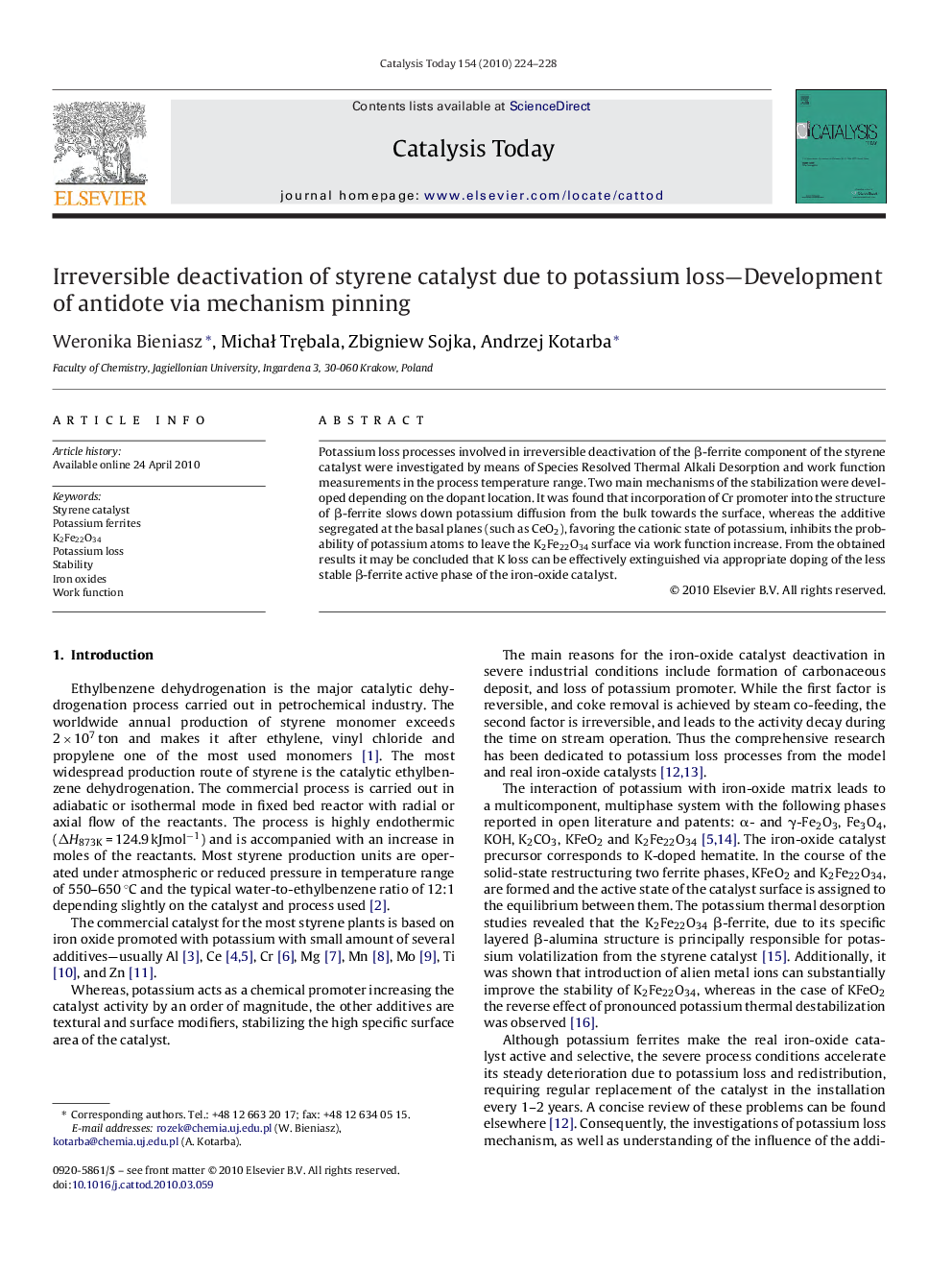| Article ID | Journal | Published Year | Pages | File Type |
|---|---|---|---|---|
| 56275 | Catalysis Today | 2010 | 5 Pages |
Potassium loss processes involved in irreversible deactivation of the β-ferrite component of the styrene catalyst were investigated by means of Species Resolved Thermal Alkali Desorption and work function measurements in the process temperature range. Two main mechanisms of the stabilization were developed depending on the dopant location. It was found that incorporation of Cr promoter into the structure of β-ferrite slows down potassium diffusion from the bulk towards the surface, whereas the additive segregated at the basal planes (such as CeO2), favoring the cationic state of potassium, inhibits the probability of potassium atoms to leave the K2Fe22O34 surface via work function increase. From the obtained results it may be concluded that K loss can be effectively extinguished via appropriate doping of the less stable β-ferrite active phase of the iron-oxide catalyst.
